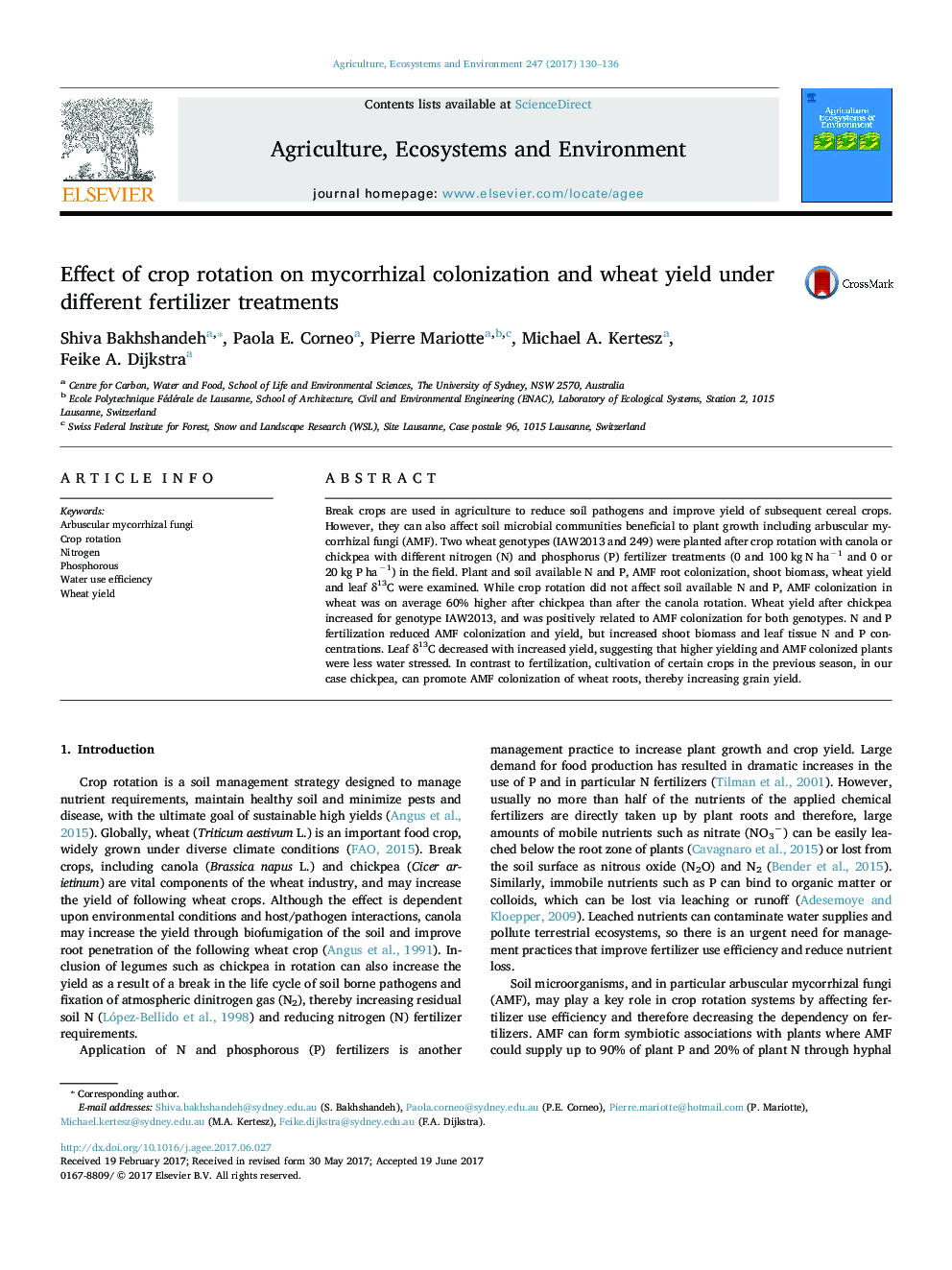| Article ID | Journal | Published Year | Pages | File Type |
|---|---|---|---|---|
| 5537985 | Agriculture, Ecosystems & Environment | 2017 | 7 Pages |
Abstract
Break crops are used in agriculture to reduce soil pathogens and improve yield of subsequent cereal crops. However, they can also affect soil microbial communities beneficial to plant growth including arbuscular mycorrhizal fungi (AMF). Two wheat genotypes (IAW2013 and 249) were planted after crop rotation with canola or chickpea with different nitrogen (N) and phosphorus (P) fertilizer treatments (0 and 100 kg N haâ1 and 0 or 20 kg P haâ1) in the field. Plant and soil available N and P, AMF root colonization, shoot biomass, wheat yield and leaf δ13C were examined. While crop rotation did not affect soil available N and P, AMF colonization in wheat was on average 60% higher after chickpea than after the canola rotation. Wheat yield after chickpea increased for genotype IAW2013, and was positively related to AMF colonization for both genotypes. N and P fertilization reduced AMF colonization and yield, but increased shoot biomass and leaf tissue N and P concentrations. Leaf δ13C decreased with increased yield, suggesting that higher yielding and AMF colonized plants were less water stressed. In contrast to fertilization, cultivation of certain crops in the previous season, in our case chickpea, can promote AMF colonization of wheat roots, thereby increasing grain yield.
Keywords
Related Topics
Life Sciences
Agricultural and Biological Sciences
Agronomy and Crop Science
Authors
Shiva Bakhshandeh, Paola E. Corneo, Pierre Mariotte, Michael A. Kertesz, Feike A. Dijkstra,
